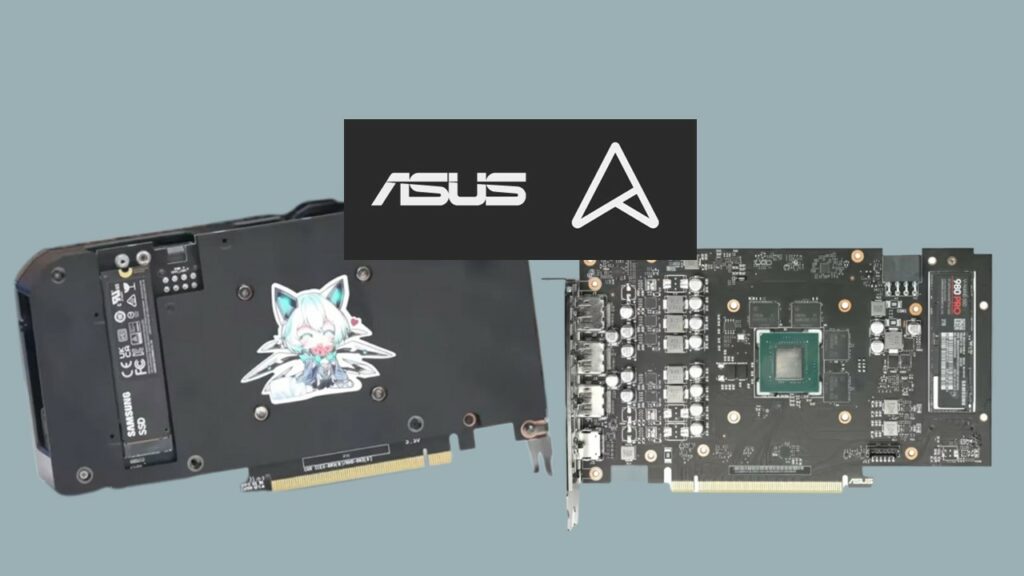Asus is gearing up to introduce a graphics card that comes equipped with a built-in storage solution. This innovative approach was showcased during the summer when Asus presented a prototype of their RTX 4060 Ti graphics card, showcasing an M.2 2280 SSD slot located on the rear of the card. Asus has successfully developed a method to allocate some of the previously unused PCIe lanes to support the integration of an SSD.
This development holds the promise of streamlining storage options for gamers and creative professionals who demand fast access to data. Asus’ utilization of this technology in their graphics card offers an intriguing glimpse into the future of GPU design, potentially revolutionizing the way users can enhance both their gaming and computing experiences.
The design discussed in the publication has a clever feature that enables the solid-state drive (SSD) to make use of the GPU’s heatsink and fan array for more efficient cooling. This is especially beneficial since contemporary SSDs tend to generate considerable heat and are prone to thermal throttling when not properly cooled. During the demonstration, it became evident that the GPU’s cooler was capable of reducing the SSD’s operational temperature by a significant 10 degrees Celsius. This is a notable improvement, presumably when compared to a typical SSD plugged into a motherboard slot without the additional cooling support.

This innovative design not only provides enhanced cooling for SSDs but also showcases the potential for more effective heat dissipation solutions in GPU technology. It addresses a common concern in modern computing by ensuring SSDs remain at an optimal temperature for performance, which could have a positive impact on overall system efficiency and longevity.
Critics of Asus’ innovative solution may contend that it doesn’t effectively address a genuine problem or fulfill a specific need. After all, most modern motherboards come equipped with dedicated SSD ports, making them the logical choice for SSD installation. The addition of an SSD slot on the graphics card could be seen as introducing unnecessary complexity to the system. There’s also a legitimate concern about potential complications when upgrading video cards. Moving an SSD from the graphics card to a traditional motherboard port may raise questions about data integrity and potential data corruption issues. Moreover, the larger question of compatibility arises, will this solution work seamlessly with any modern motherboard, or will it be limited to Asus boards? This could potentially limiting its appeal and practicality for users with different setups.
While Asus’ approach undoubtedly offers a unique twist on GPU design, these concerns highlight important considerations that both the company and potential users should address. It will be interesting to see how the market responds and whether this innovative integration of GPU and SSD technology gains widespread acceptance or remains a niche solution primarily suited to specific scenarios.
One important aspect to take into account is the impact on power consumption when incorporating an SSD into the graphics card. While the increase in power draw is generally minimal, it remains a factor that users should be mindful of. This additional power requirement, albeit small, can still have implications for system stability and efficiency, particularly in setups with limited power budgets or when using lower-end power supplies. Users contemplating this innovation should assess their system’s power capabilities and consider whether any adjustments or upgrades are necessary to accommodate the slightly heightened power demand introduced by this unique GPU-SSD integration.
Maybe you liked other articles?

